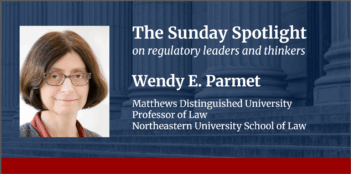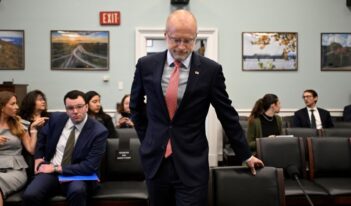
In Corner Post v. Board of Governors, the Court renders agency rules more vulnerable to challenge.
The U.S. Supreme Court in Corner Post v. Board of Governors of the Federal Reserve System was faced with what seemed like a fairness problem. Corner Post objected to a rule issued by the Board of Governors of the Federal Reserve System in 2011. That rule set the fees that companies, such as Visa, could charge merchants, such as Corner Post, when the merchants’ customers chose to pay with credit cards instead of cash. When Corner Post sued, asking the court to overturn the 2011 rule as unlawfully generous to the credit card companies, the Federal Reserve responded that the six-year statute of limitations had passed—even though Corner Post had not been founded and open for business until 2018, after the statute of limitations had expired.
To make matters worse, the rule directly applied to the credit companies only; there was no way that Corner Post could challenge the rule defensively because the Federal Reserve would never sue it to enforce the rule.
But Corner Post’s lawyers had an argument that the Supreme Court’s majority accepted. The statute of limitations runs from the time that a party’s claim “accrued.” Since Corner Post was not doing business until 2018, and its right to sue did not accrue until it began operating, its claim filed in 2021 was within six years of when it could first sue. The literal language, as interpreted by Justice Amy Comey Barrett, writing for the 6-3 majority, could support that conclusion.
This interpretation, however, produced some very unsettling results, as the dissenters argued.
First, because new companies are formed every day, no agency can ever know that its rules are free from challenge. Second, even if several courts have held that the rule is lawful, every challenger has a due process right to its own day in court. Third, unless the Supreme Court has upheld the rule, stare decisis will not be much of a barrier as some newly incorporated entity can be discovered, or even created, to be able to allow a rule’s objectors to sue in another circuit. Fourth, a second or even third try at attacking a rule is more likely to succeed. This is as a result of the double whammy from the demise of Chevron v. Natural Resources Defense Council in Loper Bright v. Raimondo, decided just three days before Corner Post was handed down.
To be sure, there are some factors that make a flood of litigation less likely. These lawsuits are brought under the Administrative Procedure Act with review of the record made in the proceeding before the agency. Thus, Corner Post will be stuck with the evidence and claims offered back in 2011, which probably limits it in court to the legal arguments made to the Federal Reserve. One of the claims that Corner Post might like to make is that the rule has proven to be much too generous to the credit card companies. That kind of changed-circumstances claim has little chance of success on an appeal from the 2011 decision, but the claim might have a better chance if Corner Post asked the agency to amend the rule for that reason.
Agency rules sometimes fail because the proper procedures were not followed or because the agency failed to respond to a significant adverse study or comment on the evidence put forth by the agency to support its rule. Those kinds of objections, which are curable if made in at the outset, are less likely to find favor with the courts many years after the alleged procedural violation occurred.
Businesses become accustomed to rules—even those that they do not like—and they dislike change almost as much as they do costly requirements. In the environmental field, once a company has made major investments to meet an agency’s mandate, it prefers not to back track, even if that was its preference when the rule was under consideration. Thus, Corner Post may not like this rule, but it is less likely to gather support from similarly situated merchants now than it would have 13 years ago. And, of course, Corner Post will have to do battle not just with the Federal Reserve, but also with Visa, Mastercard, and American Express who will fight to keep the higher fees. Nonetheless, there can be little doubt that the decision in Corner Post will surely increase the number of lawsuits that agencies will be required to defend. This effect may be pronounced given the demise of Chevron deference.
There was a way out of that dilemma, as shown by the Court’s May 2024 decision in Harrow v. Department of Defense, although no one seems to have suggested it. The issue in Harrow was whether a statute that required a losing party to file an appeal with the U.S. Court of Appeals for the Federal Circuit within 60 days was absolute or subject to equitable exceptions. Even though the appeal was taken against the federal government, and times to appeal are often “jurisdictional,” the Court concluded, as it had done in many similar cases, that the courts retained the discretion to provide equity in appropriate cases.
Thus, in Corner Post, instead of treating the six-year limitation as fixed, the Court could have created an exception for those who, like Corner Post, were not in existence during the applicable six-year period and had no other means of testing the rule because it would never be enforced against them as it is not directed at their conduct. With that double requirement, the number of cases filed years after a rule became final would decrease dramatically as compared to what the Court’s Corner Post decision will produce.
But that is not what the Court did, and so the federal government and the country are stuck with a needlessly overbroad statute of limitations, courtesy of Corner Post.
This essay is part of a series, titled The Supreme Court’s 2023-2024 Regulatory Term.




